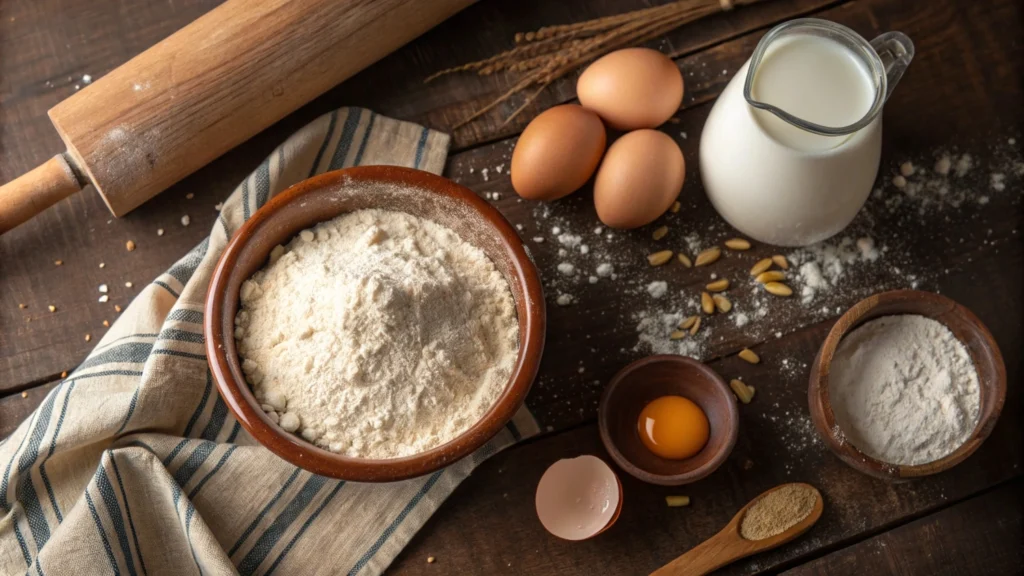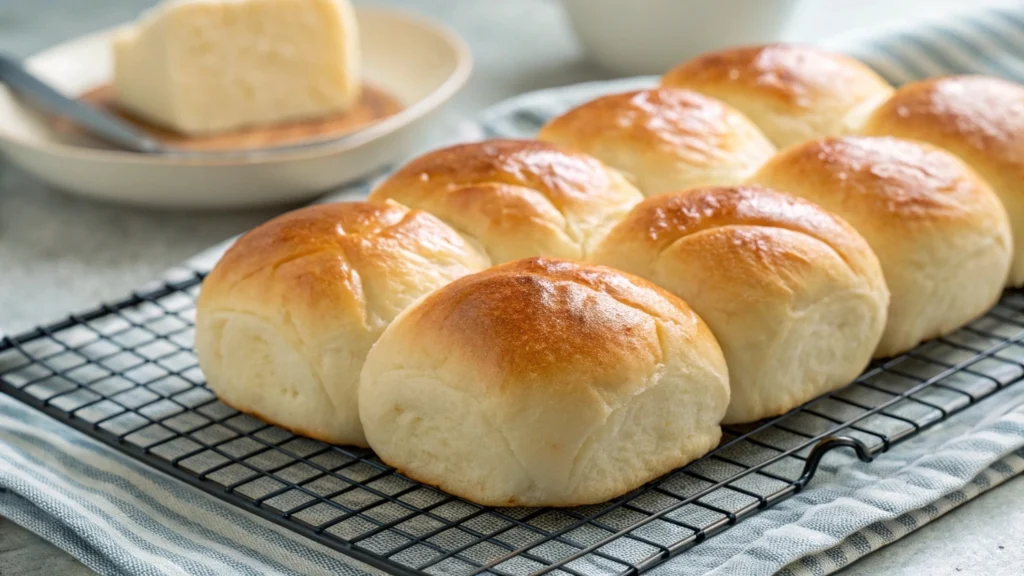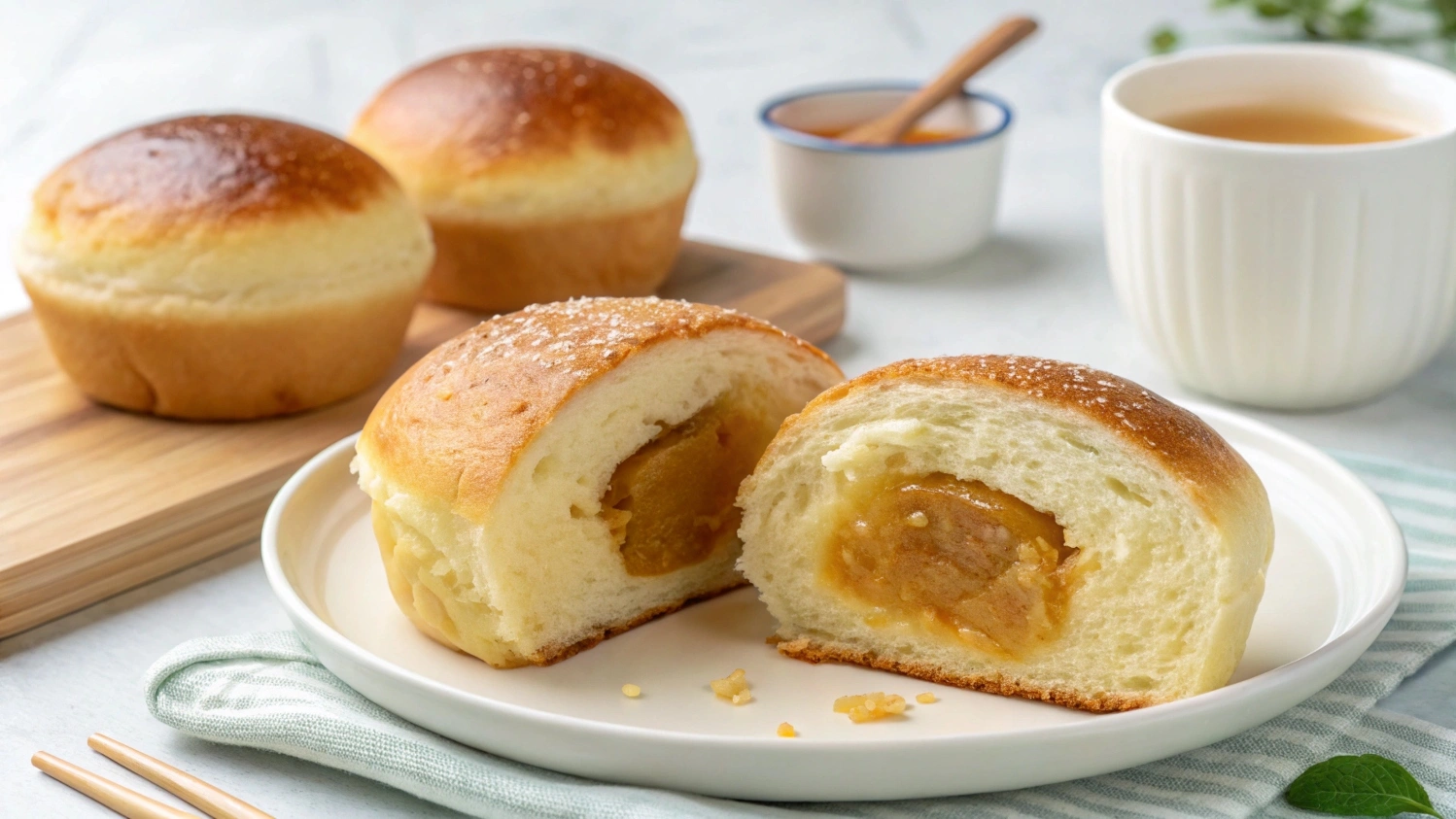When it comes to crafting the softest, fluffiest buns that melt in your mouth, Pai Bao type of flour stands out as a game-changer in the culinary world. This unique flour has become a cornerstone of Asian baking, celebrated for its ability to produce tender, airy bread with a delightful sweetness. Whether you’re a seasoned baker or a curious foodie eager to explore new ingredients, this article dives deep into everything about Pai Bao type of flour. From its origin and composition to its role in baking and beyond, we’ve got you covered. Let’s embark on this flour-filled journey!
Introduction to Pai Bao Type of Flour
What is Pai Bao Flour?
Pai Bao flour is a specialized baking ingredient commonly used in making Asian-style milk bread, also known as Pai Bao buns. Renowned for its ability to create bread with an irresistibly soft texture, this flour is finely milled and often enriched with essential nutrients. Its composition is designed to retain moisture while providing structure, resulting in buns that stay fresh longer than traditional bread.
In simple terms, Pai Bao flour is the secret weapon behind the light, feathery texture of some of the most popular bakery items in Asian cuisine.
Origin and History
The name “Pai Bao” originates from the Cantonese term for “row of buns,” referring to the traditional way these buns are baked together in a line. This baking technique, paired with the right flour, creates the signature pull-apart texture. Pai Bao type of flour has its roots in Hong Kong bakeries, where it was developed to meet the demand for softer, sweeter bread that complemented Western-style tea culture. Over time, it spread across Asia and beyond, gaining fans worldwide.
Unique Characteristics of Pai Bao Flour
What sets Pai Bao flour apart from other types of flour?
- High moisture retention: This ensures that bread remains soft and fluffy even after cooling.
- Finely milled texture: The fine grains make it perfect for creating delicate, airy bread.
- Balanced gluten content: While it’s not as high in gluten as bread flour, it provides enough elasticity to create a chewy yet tender crumb.
Thanks to these characteristics, Pai Bao type of flour is a baker’s best friend when crafting Asian-inspired pastries and bread.
Ingredients and Composition
Primary Ingredients in Pai Bao Flour
The magic of Pai Bao type of flour lies in its carefully selected ingredients. Most brands include finely milled wheat flour enriched with vitamins like thiamine, niacin, and folic acid. These additions ensure the bread not only tastes incredible but also offers a nutritional boost.

Some variations may incorporate dairy-based powders or sweeteners to enhance the subtle sweetness Pai Bao buns are known for. Another key ingredient is the balanced gluten content, which provides just the right elasticity for a soft, pull-apart texture.
Nutritional Profile and Benefits
Although it’s designed for indulgent baked goods, Pai Bao type of flour contains moderate amounts of protein, which contributes to its stretchy, airy bread texture. The enrichment process adds essential nutrients, making it a great base for healthier baked treats when paired with the right ingredients.
What Sets it Apart from Other Flours?
- Finely Milled Texture: This enhances absorption of liquids, crucial for the moist and fluffy results typical in Pai Bao buns.
- Versatility in Baking: While perfect for buns, it also works wonders in pastries and desserts.
- Moisture Retention: The bread stays fresher and softer for longer, a quality not easily achieved with regular flours.
How to Use Pai Bao Flour in Baking
Pai Bao Flour in Traditional Recipes
The most iconic recipe using Pai Bao type of flour is the classic milk bread or Pai Bao buns. These soft, slightly sweet buns are a staple in Asian bakeries, adored for their delicate crumb and lightly golden crust. The unique combination of this flour and a tangzhong starter gives the bread its unparalleled softness.

If you’re intrigued by flour versatility, explore this guide to pastries and their techniques.
Perfecting the Art of Baking Soft Buns
To bake perfect buns using Pai Bao type of flour, precision in measurements and technique is key. Start by combining the flour with a tangzhong paste (a cooked mix of water and flour). This step ensures maximum moisture retention, giving the bread its signature tenderness.
Tips for success:
- Use room-temperature ingredients for even mixing.
- Knead until the dough achieves a smooth, elastic texture.
- Allow adequate proofing time for a fluffy rise.
Other Dishes and Desserts Using Pai Bao Flour
While buns are its flagship creation, Pai Bao flour is incredibly versatile. You can use it to create pastries like Danish rolls, sweet breadsticks, or even sponge cakes. The flour’s ability to blend well with other ingredients ensures consistency across various recipes.
For adventurous bakers, pairing Pai Bao type of flour with fillings like red bean paste or custard takes baked goods to the next level. Discover more unique baking ideas, like the ones found in this recipe for innovative bread creations.
Comparing Pai Bao Flour to Other Flour Types
Differences Between Pai Bao Flour and All-Purpose Flour
One of the most common questions among bakers is how Pai Bao type of flour compares to all-purpose flour. While both are versatile and widely available, their purposes and results differ significantly.
- Texture and Results: Pai Bao type of flour is milled finer than all-purpose flour, leading to a softer crumb and lighter texture in baked goods.
- Protein Content: While all-purpose flour has a moderate protein content of about 10-12%, Pai Bao flour balances gluten levels to create tender, pull-apart bread.
- Moisture Retention: Pai Bao’s unique composition allows bread to stay fresher for longer, unlike all-purpose flour, which may result in quicker drying.
Specialty Flours: A Comparison
When it comes to specialty flours, Pai Bao flour competes with bread flour and cake flour.
- Bread Flour: Higher in protein than Pai Bao type of flour, bread flour is ideal for chewy and dense loaves, whereas Pai Bao focuses on softness.
- Cake Flour: While cake flour creates light desserts, it lacks the structural integrity needed for Pai Bao buns.
Choosing the right flour depends on your baking goals. For tender, airy bread, Pai Bao type of flour is the winner.
When and Why to Choose Pai Bao Flour?
If your goal is to replicate the soft, pillowy texture of Asian-style milk bread or delicate pastries, Pai Bao flour is your go-to. Its unique balance of elasticity and tenderness makes it perfect for a wide range of recipes.
Pro Tip: Want to explore versatile recipes? Check out this guide to pastries.
Where to Buy Pai Bao Flour and Tips for Selection
Finding Pai Bao Flour Locally and Online
Searching for Pai Bao type of flour? You’ll find it in most Asian grocery stores and specialty baking shops. Additionally, online retailers like Amazon often stock popular brands, making it accessible no matter where you live.
When shopping online, always read reviews and check the seller’s ratings to ensure you’re getting authentic Pai Bao flour.
How to Spot Authentic Pai Bao Flour?
With so many options available, selecting authentic Pai Bao type of flour can feel overwhelming. Here are a few tips:
- Check the Label: Look for phrases like “enriched flour” or “Asian-style baking flour.”
- Texture Test: Genuine Pai Bao flour feels finer and silkier than regular flour.
- Trusted Brands: Stick to known Asian brands for quality assurance.
Price Range and Packaging Options
Expect to pay slightly more for Pai Bao flour than all-purpose flour due to its specialty nature. Prices typically range between $5 to $10 per pound, depending on the brand and packaging.
If you love baking in bulk, look for larger packages to save money. Most brands offer 2-pound and 5-pound options for frequent bakers.
FAQs About Pai Bao Flour
What is the best way to store Pai Bao Flour?
To maintain the freshness of Pai Bao type of flour, proper storage is key. Always keep it in an airtight container to protect it from moisture and contaminants. Store the container in a cool, dry place, away from direct sunlight. If you live in a humid environment, consider storing the flour in the refrigerator or freezer to extend its shelf life.
Can Pai Bao Flour be substituted with other types?
While it’s tempting to substitute Pai Bao type of flour with all-purpose flour, the results won’t be the same. Substitutions may lead to a denser texture and shorter shelf life for your baked goods. However, for non-bread recipes like cookies, all-purpose flour can work in a pinch.
Is Pai Bao Flour gluten-free?
No, Pai Bao type of flour is not gluten-free. It contains a moderate amount of gluten, which is essential for creating the elasticity and softness typical of Asian-style milk bread. For gluten-free baking, consider alternative flours like almond or rice flour.
What makes Pai Bao buns so soft and airy?
The magic lies in the combination of Pai Bao flour and the tangzhong method. This method ensures high moisture retention, giving buns their fluffy and tender texture. Additionally, the balanced gluten content in the flour provides the structure needed for the bread to rise perfectly.
The Role of Pai Bao Flour in Asian Cuisine
Cultural Importance of Pai Bao Buns
Pai Bao buns are more than just a treat; they’re a cultural icon in Asian cuisine. Found in bakeries across Hong Kong, Taiwan, and beyond, these buns represent a fusion of Eastern and Western baking traditions. The use of Pai Bao type of flour ensures a consistent softness that resonates with the delicate flavors favored in Asian desserts and bread.
Popular Asian Dishes Made with Pai Bao Flour
Beyond milk bread, Pai Bao type of flour shines in a variety of Asian baked goods. It’s commonly used in custard-filled buns, red bean bread, and coconut rolls. The flour’s fine texture makes it ideal for these intricate pastries, ensuring a melt-in-your-mouth experience.
Why It’s a Favorite in Asian Bakeries
Asian bakeries value Pai Bao type of flour for its ability to produce consistent results. Its unique properties allow bakers to craft bread and pastries that stay soft for days, unlike those made with standard flours. This quality is particularly important in warm climates, where bread tends to dry out quickly.
If you’re looking to recreate authentic Asian bakery flavors, experimenting with Pai Bao type of flour is a must. The results will transport your taste buds straight to the bustling streets of Hong Kong or Taipei!
People Also Ask (PAA) Section
Is Pai Bao Flour similar to bread flour?
While both Pai Bao type of flour and bread flour share some similarities, they are designed for different purposes. Bread flour has a higher protein content, resulting in a denser, chewier texture ideal for crusty loaves. In contrast, Pai Bao flour strikes a balance, creating bread that is soft, airy, and tender perfect for milk bread and pastries.
What is Pai Bao Bread?
Pai Bao bread, often called Asian milk bread, is a light and fluffy bread made using Pai Bao type of flour. This bread is typically sweetened slightly and features a soft crust, making it a favorite in Asian bakeries. Its unique texture comes from combining the flour with the tangzhong method, a pre-cooked flour paste that locks in moisture.
Can I make Pai Bao Bread without Pai Bao Flour?
Technically, yes, but the results may vary. Substituting Pai Bao type of flour with all-purpose or bread flour might work, but you’ll likely lose some of the softness and moisture retention that makes Pai Bao bread so distinctive.
Is Pai Bao Flour suitable for pastries?
Absolutely! Thanks to its fine texture and balanced gluten content, Pai Bao type of flour is perfect for delicate pastries like custard buns, coconut rolls, and even sponge cakes. Its ability to hold moisture ensures a soft bite every time.
Conclusion and Final Thoughts
Pai Bao type of flour is truly a versatile ingredient that every baker should try. Whether you’re creating milk bread, experimenting with Asian pastries, or just curious about specialty flours, its unique properties can elevate your baking to new heights.
From its origins in Asian bakeries to its growing popularity worldwide, Pai Bao type of flour has proven itself as a must-have for producing soft, fluffy, and flavorful baked goods. Unlike other flours, it excels at retaining moisture, ensuring bread stays fresh and delicious longer.
If you’re eager to dive into the world of Pai Bao flour, start with milk bread and explore more creative recipes along the way. This flour is not just an ingredient it’s a gateway to discovering the art of tender, melt-in-your-mouth bread and pastries.
Related Baking Techniques You Should Try
If you’re experimenting with different styles of baking, you might want to explore some exciting techniques:
- Origami Apple Pie Ideas To Make Your Dessert Unforgettable – A creative way to shape and present your apple pie.
- How To Make Camarones A La Diabla: A Step-by-Step Guide – A fiery seafood dish that pairs well with buttery bread made from Pai Bao flour.
- Exploring Jalbitedrinks Liquor Recipe – Your Ultimate Guide – If you enjoy cocktail pairings, check out how unique liquors can complement sweet and savory baked goods.
- Birria Ramen: The Bold Fusion Dish You Need To Try Now – A great way to explore fusion cooking, just like Pai Bao flour’s ability to bridge Western and Asian baking techniques.

